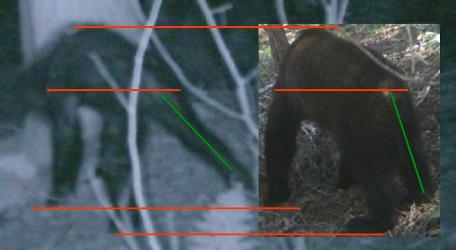In April 2006, the North American Wood Ape Conservancy initiated a long-term camera trap project called Operation Forest Vigil. Study sites were established in two remote areas located in the Ouachita Mountains of Oklahoma/Arkansas and in East Texas. Although both areas are characterized by high rainfall and extensive forest, in addition to long histories of wood ape sightings, they differ from each other in many ecological aspects.
One significant difference that quickly became apparent to NAWAC researchers was the presence of the American black bear (Ursus americanus) in the mountains of southwestern Arkansas and southeastern Oklahoma. Actually, the presence of black bears in the mountains was well known; what NAWAC members did not realize was the impact bear activity would have on Operation Forest Vigil.
A video system and several camera traps were installed in the mountains to begin the project. Upon the return visit several months later, researchers were dismayed to find the video system destroyed. A companion camera clearly identified the culprit as a black bear. Over the course of the following days, it quickly became apparent that every camera had been visited by bears. This pattern remained consistent in the following years. Of the dozens of cameras employed in the Ouachitas, each attracted the deleterious attention of bears, forcing the purchase of protective boxes (Figure 1).
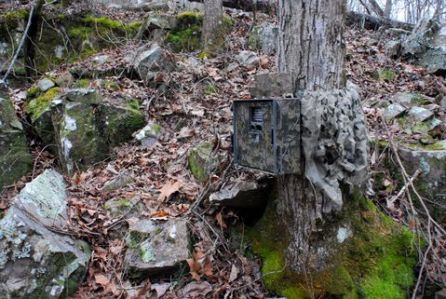
During the 2007 Texas Bigfoot Conference, the NAWAC addressed the destructive tendencies of black bears by displaying several series of photographs that clearly indicated camera tampering in initial frames and bears walking off in later frames.

A number of the early frames merely indicated a dark-haired unidentified animal to the side of the images, jarring, turning and basically attacking the camera traps (Figure 2 & 4).

In most of the cases, a black bear or two would be seen to finally emerge in front of the camera trap after tiring of seemingly trying to eat it (Figure 3).

The attraction of bears to camera traps is apparently a product of their incredible sense of smell and the plastics used in most cameras. As described at bearinfo.org, black bears are attracted to a variety of petroleum-based products, including fuels, oils, plastics and rubber. Some bear experts suggest that petroleum-based products smell sweet to bears and are therefore extremely enticing.
With the Operation Forest Vigil camera trap project ongoing now for over three years, literally thousands of photos have been obtained by the high-speed camera traps stationed in the Ouachita Mountains. Many of the photos inconspicuously display the intense attraction of black bears to camera traps. Such photographs are instructive in illustrating how ambiguous images can be misconstrued as representing the activity of animals other than bears, as is sometimes the case with individuals using game cameras in hopes of documenting species such as the wood ape.
Often bears will shove game cameras with their paws, resulting in radically altered lens positions, depending on how the camera is attached to its support. The resultant photos may not show the bear, especially with camera models that do not have particularly fast trigger speeds, but they certainly indicate that something large and strong disturbed the cameras (Figure 5).
Although such photos are sometimes interpreted as possibly indicative of wood ape behavior, black bears should be considered as the responsible species when the cameras are located within their range and habitat.
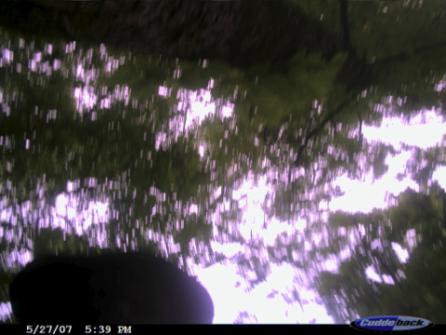
In other cases of bear disturbance of camera traps the offending bear’s presence is indistinctly recorded. Photos may show dark blurry or vague forms that are unidentifiable (Figure 6).
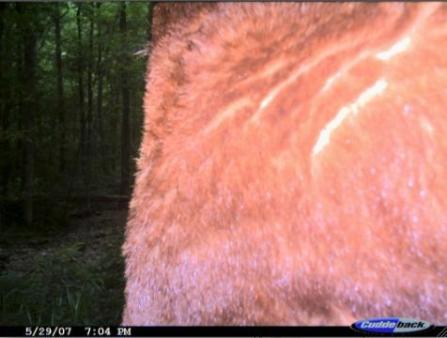
The extreme close-up images that result when the bear is right on the camera can easily be misconstrued by overzealous enthusiasts eager to obtain wood ape photographs.
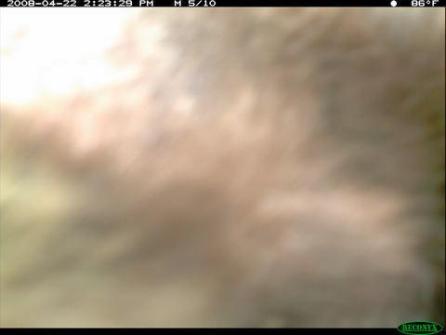
Sometimes cameras rather clearly record a swatch of hair, but little else. Again, when in black bear range and habitat, such photos should be ascribed to bears (Figure 8). It is also important to remember that black bears are not always black in color (Figures 6, 9).
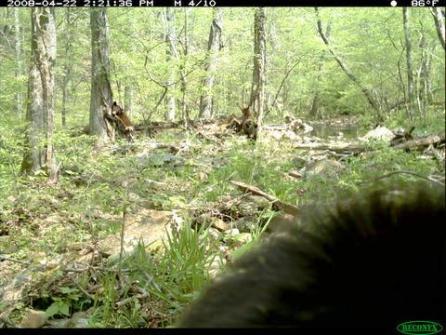
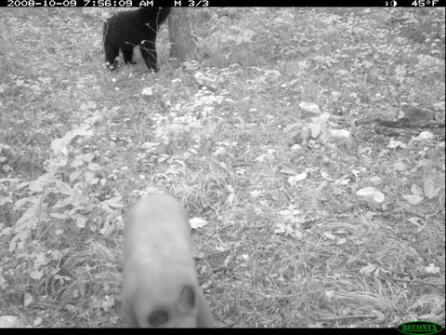
Even when images captured by camera traps include the whole body of a bear, misinterpretations and misidentifications occur (Figure 10). The body proportions of bears vary with age, as they do with other animals and humans. Appearance can also change as a result of weight, health, and condition of pelage. When these factors are considered with the ability of bears to stand and assume different body positions, combined with any number of possible body orientations with regard to the camera lens, care must taken when confronted with images that may look “unbearlike” upon initial inspection. Absolutely no credibility points will be garnered by precipitous pronouncements of wood ape photographic evidence that is, in reality, merely an odd-looking photograph of a black bear. Wood ape photographs, to be accepted as such, must clearly and obviously illustrate something other than the usual suspect, the American black bear.
